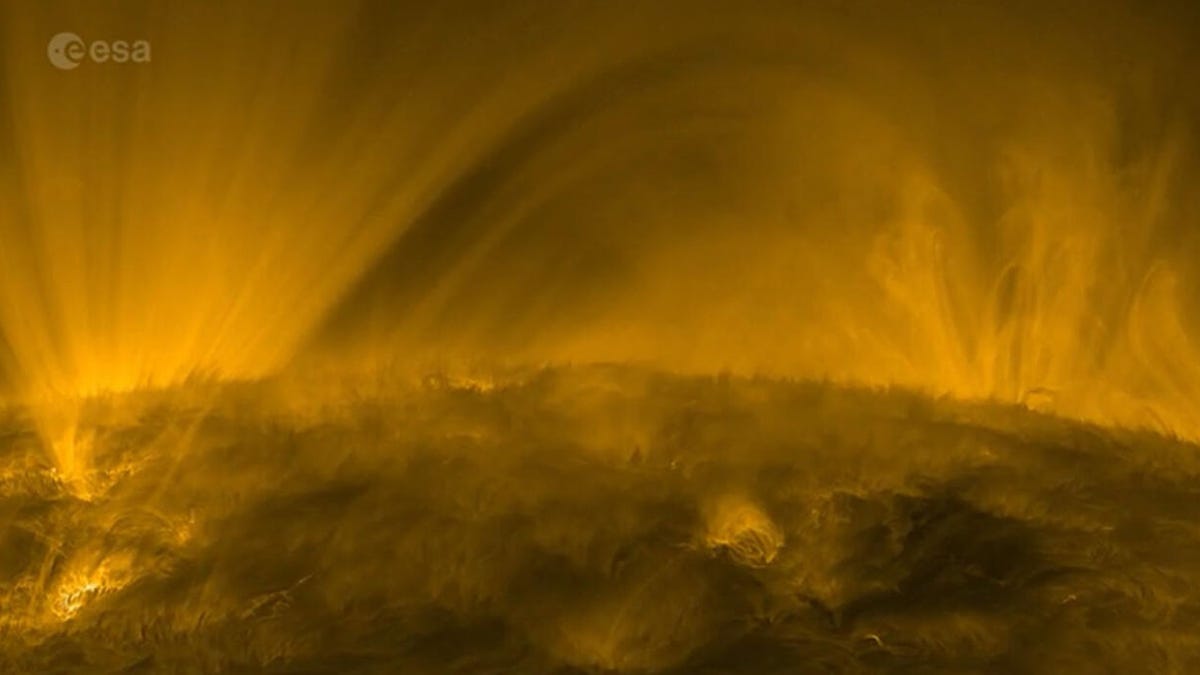
Last month’s total solar eclipse wasn’t the only fun with the sun skygazers are enjoying this year. The European Science Agency has just dropped a hot new video of the sun’s corona, which is the upper layer of the sun’s atmosphere. The agency’s solar orbiter recorded the footage on Sept. 23, 2023, and the group has annotated the 30-second video to give viewers some context into what they’re looking at.
Just a few seconds in, you’ll get a glimpse of some coronal moss, a bright gas that makes lacy patterns across the sun. A few seconds later, the ESA points out spicules along the horizon — spires of gas that reach up through the sun’s chromosphere. These spires can reach heights of 10,000 kilometers, or approximately 6,200 miles. The video also captures what appears to be a small eruption at the 22-second mark. “Small” is relative, as the ESA notes that the eruption was larger than Earth.
Read more: How an Apple Watch Saved the Solar Eclipse for Me
The clip ends with a glimpse of coronal rain, which is made up of high-density clumps of plasma that sizzles at a temperature around 10,000 degrees Celsius (18,032 Fahrenheit). For context, the brighter coronal loop around the rain is burning at 1 million degrees Celsius (1.8 million Fahrenheit). In short, rain showers on the sun are insane.
Snake crossing the sun
As a whole, this is some of the best video footage we puny humans have ever seen of the sun. It comes courtesy of the ESA’s solar orbiter and its extreme ultraviolet imager, launched as part of the agency’s mission to capture close-up images of the sun in ways never before seen. The mission began in 2020 with the launch of the solar orbiter, and nabbed amazing images of the sun in 2022, along with some footage of Earth, Mars and Venus.
Arguably, the most intense footage so far was that of a massive solar eruption that extended millions of kilometers into space, and later footage that looks like a snake slithering across the sun. According to NASA, which assists the ESA, the snake effect was caused by the intermingling of plasma and the sun’s magnetic field.
The mission has also given us the first-ever close-up images of the sun’s polar regions and measurements of the sun’s solar winds that were impossible to take on Earth.
Read more: Total Solar Eclipse 2024: The Best Photos We’ve Seen
